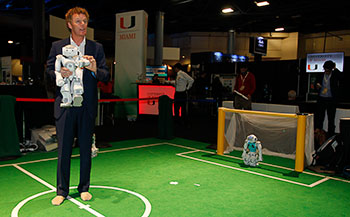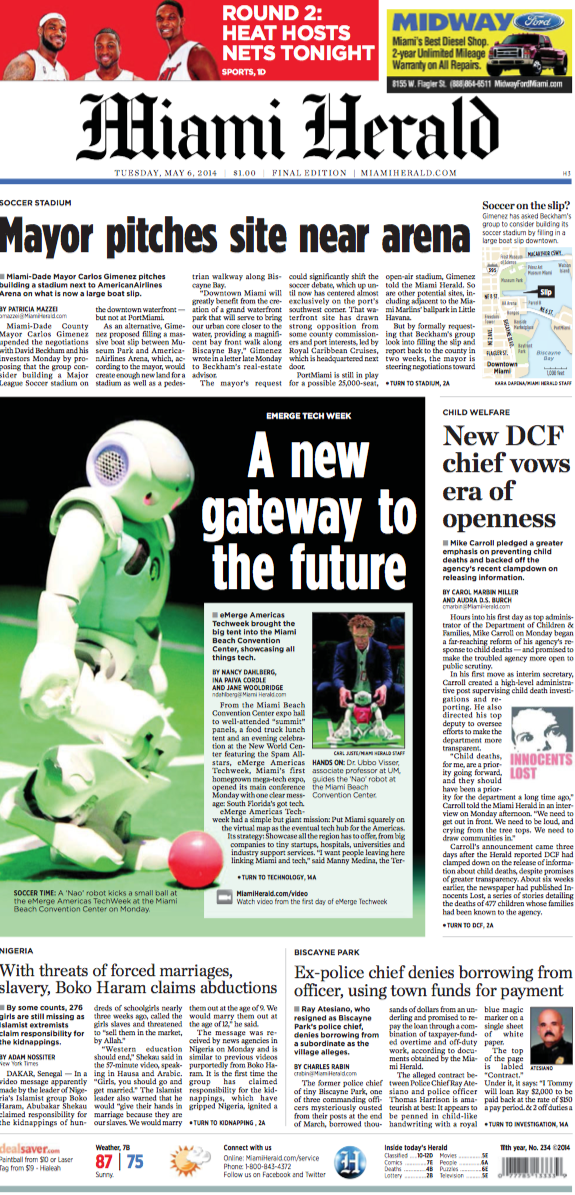The RoboCanes – a five-member autonomous robot soccer team created by UM students and faculty – bested rivals Austin Villa (University of Texas at Austin) to finish in second place at last week’s 2014 RoboCup U.S. Open.The U.S. Open is the American qualifying tournament for the international RoboCup, an annual event that uses soccer to promote robotics and artificial intelligence (AI) research. The 2014 RoboCup World Championships will take place in July in João Pessao, Brazil.
 |
| Professor Ubbo Visser takes the field with a member of the Robocanes squad. |
Four American universities entered teams of autonomous robots – that can learn from experience, make real-time decisions, and communicate as a group – in the 2014 U.S. Open.
Ubbo Visser, AI expert and associate professor of computer science in the UM College of Arts & Sciences, leads the RoboCanes project, alongside a group of UM computer science students.
Visser focuses his research on developing methods and techniques that allow his robot players to recognize and predict their opponents’ intentions.
 |
|
A soccer-playing robot from the |
“The difference between an autonomous robot and a remote-controlled robot is that the autonomous robot makes its own perceptions, does its own thinking, and takes its own actions,” Visser explains, adding that autonomy is necessary in soccer, where “the scene changes constantly, within milliseconds.”
He states, “The goal is to create robots that act appropriately in unforeseen situations. The five robots are supposed to react together as a team.”
These skills are useful beyond the field. Robots that can anticipate actions in adversarial environments, and make split-second choices as a result, hold promise for development of machines that can operate independently in hazardous environments.
Visser provides an example: “At Fukushima (the failed nuclear power plant in Japan), no one could work inside – neither people nor animals. If you had a robot who could see, you could tell it, ‘Open that door. To your right, there is a valve. Shut that valve off.’ For the robot, the command becomes an objective. But to react, it has to have a certain amount of autonomy.”
While the RoboCanes team was competing in the U.S. Open, another group of humanoid robots from Visser’s lab was on display at the eMerge America Techweek conference at the Miami Beach Convention Center.
They drew a curious crowd of technology enthusiasts at the expo intended to showcase the resources for technology development in South Florida. One of the robots caught the attention of a photographer from the Miami Herald, who featured it in a front-page photo.
The RoboCanes players are 60 centimeters tall, about two feet. They contain 21 internal motors, which can move 100 times per second. The team competed against squads from the University of Texas at Austin, Bowdoin College (host of the U.S. Open event), and the University of Pennsylvania (the tournament champions).
The ultimate goal of RoboCup is to create a team of humanoid robots that can beat the human world champion soccer team, by the year 2050.

